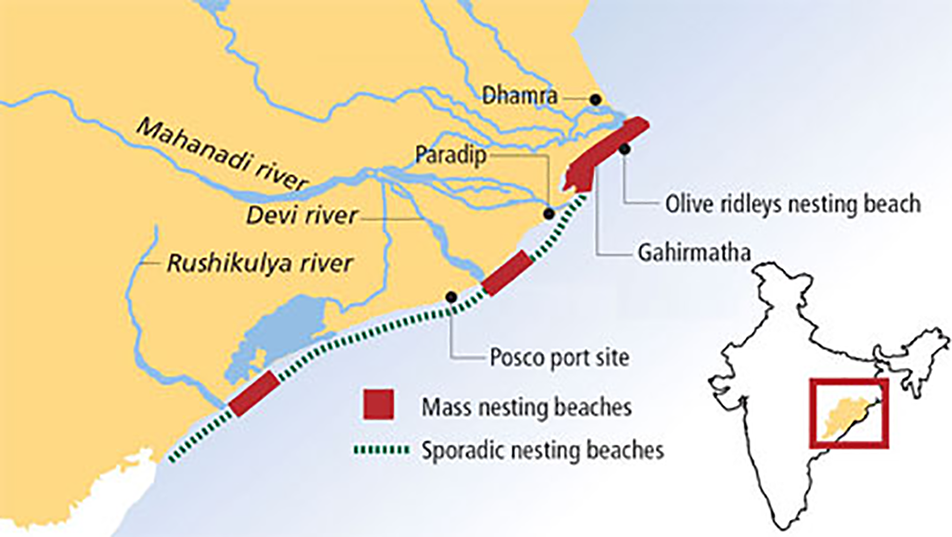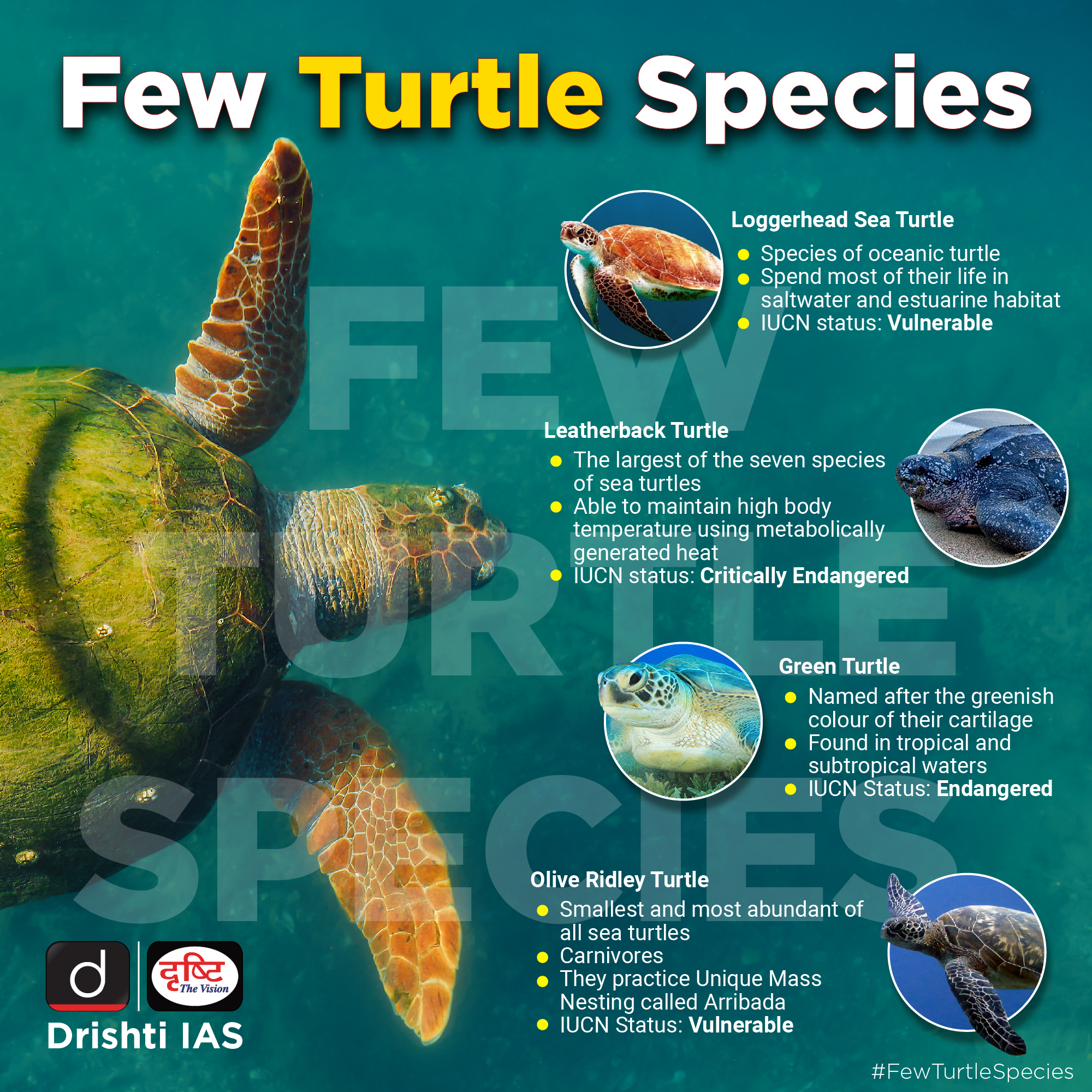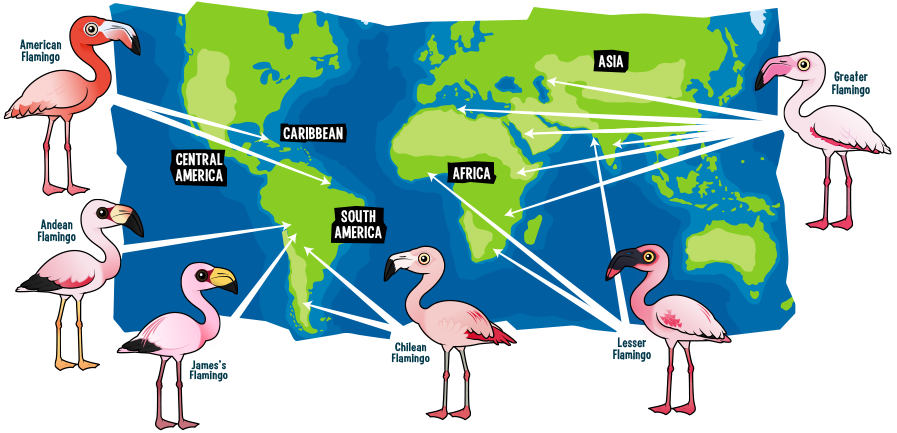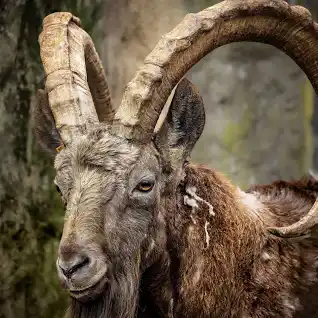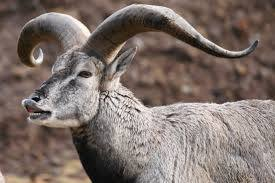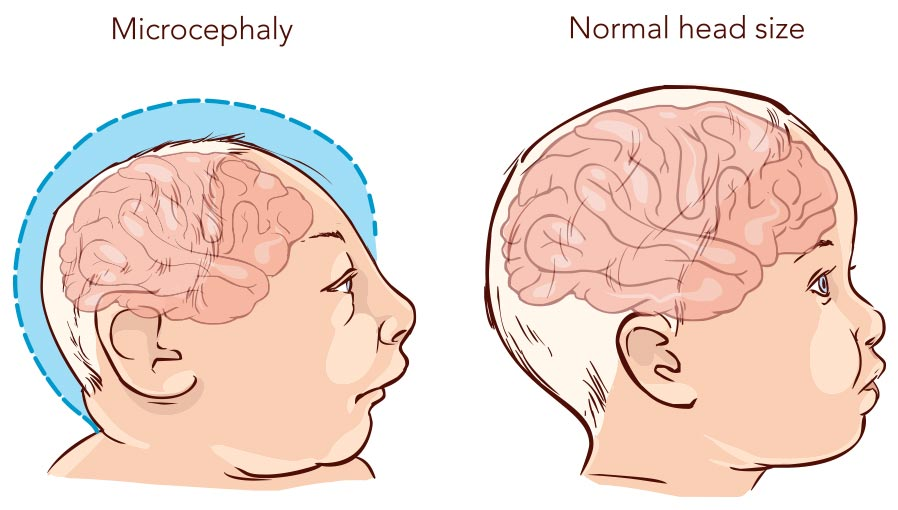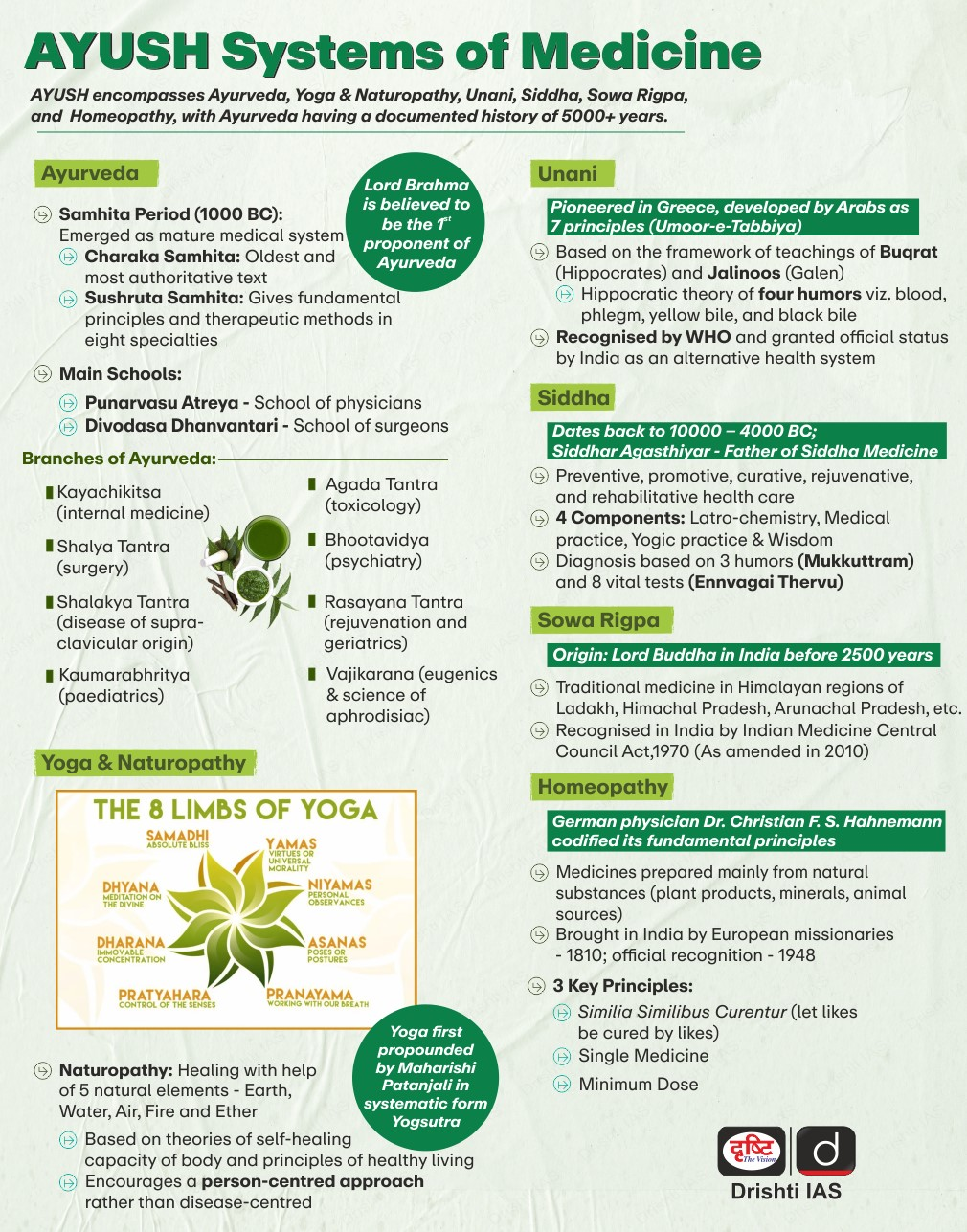Governance
Hyperpoliticisation of Indian Higher Education
For Prelims: Indian Higher Education, Vice-Chancellor, University Grants Commission (UGC), National Education Policy (NEP) 2020, All India Council for Technical Education
For Mains: Political Interference in Indian Higher Education, Academic freedom and autonomy
Why in News?
Indian higher education has a long history of intertwining with political agendas. This trend has only intensified in recent years, impacting various aspects of academic life and institutional integrity.
How have Politics Shaped Indian Higher Education?
- Political Foundations: Indian higher education institutions have long been influenced by political agendas, with politicians founding colleges to bolster their careers.
- Electorate Demands: Many institutions were created to meet the socio-cultural demands of the electorate, reflecting the diverse and complex nature of Indian society.
- Governments have placed educational institutions in politically advantageous locations, often catering to socio-cultural demands.
- Naming and Renaming: The naming and renaming of universities, particularly by state governments, are frequently driven by political motives.
- Example: The Uttar Pradesh Technical University (UPTU), Lucknow was renamed several times.
- Appointments and Promotions: Academic appointments and promotions have sometimes been influenced by political considerations rather than the qualifications and merits of candidates.
- Several Indian states are showing dissent over appointment of state governors as chancellors for state universities.
- Academic Freedom: While norms of academic freedom have not always been strictly followed, especially in undergraduate colleges, universities have generally adhered to international norms, allowing professors to teach, research, and publish freely.
- Self-censorship is becoming prevalent, especially in the social sciences and humanities. Prominent academics have faced repercussions for publishing controversial material.
Higher Education in India
- Higher education in India refers to tertiary level education provided after 12 years of schooling.
- India has the world’s second largest higher education system with over 58,000 higher education institutions.
- There are now 43.3 million students enrolled for higher education. Nearly 79% of students are enrolled in undergraduate courses with 12% at the postgraduate (master’s degree) level. Only 0.5% were studying for a PhD, with most of the rest studying for sub-degree diploma programmes.
- The most popular undergraduate subject area is Arts (34%), followed by Science (15%), Commerce (13%), and Engineering & Technology (12%).
- At the postgraduate level, the top subject area is Social Science (21%), followed by Science (15%) and Management (14%). For PhD level, the largest number of students are enrolled in Engineering & Technology (25%), followed by Science (21%).
- The higher education participation rate (GER) has risen to 28.4%, a 1.1% increase from 2020-21.
- The top States/Union Territories with highest GER are Chandigarh, Puducherry, Delhi, Tamil Nadu, Himachal Pradesh, Uttarakhand, Kerala, and Telangana.
- The total number of foreign students in Indian institutions was around 46,000 in 2021-22.
What are the Consequences of Hyperpoliticisation of Education?
- Reduced Academic Freedom: There’s a growing concern that political influence could undermine academic freedom, with faculty and students potentially facing pressure to align with the political ideology.
- Liz Magill, president of the University of Pennsylvania, testified before a U.S. Congressional committee on the issue of antisemitism on college campuses. Under pressure from wealthy donors and alumni, she resigned.
- Global Reputation: A politicised academic environment may deter talented students and faculty from enrolling or working in Indian institutions. This could hinder India's efforts to become a global leader in higher education.
- Reduced Diversity of Thought: When political agendas dominate academic discourse, it can lead to a stifling of open debate and a reluctance to explore alternative viewpoints.
- Potential for Student Activism: Increased politicisation can lead to student activism aligned with or against the political party. While student activism can be positive, it can also disrupt academic life if it becomes overly politicised.
- Erosion of Public Trust in Academia: When universities are seen as pawns in political games, public trust in the value and objectivity of academic research can erode. This weakens the legitimacy of academic expertise in shaping public policy.
- Reduced Research Funding: Politicians with short-term agendas may be less likely to invest in long-term research projects with uncertain commercial applications.
- This can stifle innovation and India's ability to compete in the global knowledge economy.
- Reduced Employability: Employers increasingly value skills like critical thinking, problem-solving, and adaptability. A hyper-politicised education that prioritises ideology over these skills can leave graduates less prepared for the workforce.
What can be done to Mitigate Political Interference?
- Institutional Autonomy: Strengthening institutional autonomy is key to resisting undue influence. Encourage universities to diversify funding sources to reduce dependence on government funds.
- Uphold academic freedom as a non-negotiable principle, ensuring free discourse and research.
- Establish autonomous university boards that lead to higher research quality, particularly in disciplines susceptible to political influence.
- In line with India's push for world-class universities, institutions should strive for autonomous status.
- This empowers them to design innovative curriculums, seek diverse funding sources, and compete for recognition as Institutions of Eminence under the UGC Act 2017, ultimately fostering a more dynamic and competitive higher education landscape in India.
- Implement the recommendations of the National Knowledge Commission (NKC), 2005 and Yash Pal Committee (2009) to grant greater autonomy to higher education institutions in academic, administrative, and financial matters.
- NKC recommends reforming existing universities: update curricula every three years, use internal assessments, adopt a course credit system, and attract talented faculty.
- Establish Central and State Boards of Undergraduate Education for curricula and examinations.
- Create an Independent Regulatory Authority for Higher Education (IRAHE) independent of stakeholders, established by an Act of Parliament.
- Depoliticise Governing Bodies: An independent selection process for selecting vice-chancellors and other key positions, based on academic merit and experience, can reduce political influence.
- National Education Policy (NEP) 2020 makes recommendations for motivating, energising, and building the capacity of faculty through clearly defined, independent, transparent recruitment, freedom to design curricula/pedagogy, incentivising excellence, and movement into institutional leadership. Faculty not delivering on basic norms will be held accountable.
- This can help ensure that decisions are made in the best interests of the institution and its students, rather than for political gain.
- Protect Dissent and Critical Inquiry: Uphold the right of faculty to engage in research and express views without fear of retaliation or censorship is crucial for maintaining the integrity of higher education.
- Clear policies and safeguards should be in place to protect academic freedom.
- Student Union Independence: Ensure university student unions remain autonomous bodies elected by students, without interference from political parties or authorities in their elections or functioning.
- Empowered Ombudsman: Establish an independent ombudsman mechanism to investigate and address complaints of political interference, academic freedom violations or politically motivated harassment from any stakeholders.
Regulatory Framework for Higher Education in India
- India’s higher education system is overseen by various statutory bodies under the purview of the Ministry of Education at the Central and State levels, which are responsible for maintaining the quality and standards of higher education.
- Main Regulatory Bodies:
- University Grants Commission (UGC): A statutory body established in 1956, apex body responsible for coordinating and maintaining standards and release of grants in university education.
- The Commission advises the Central and State Governments on measures for Higher Education development.
- It operates from New Delhi and has six Regional offices in Bangalore, Bhopal, Guwahati, Hyderabad, Kolkata, and Pune.
- All India Council for Technical Education (AICTE): Established in 1945 as an advisory body and later given statutory status in 1987.
- It approves new technical institutions, courses, and intake capacity, and delegates some powers to state governments for diploma-level institutions.
- It sets norms and standards, accredited institutions, and promotes technical education through various schemes.
- The AICTE is headquartered in New Delhi with regional offices in Kolkata, Chennai, Kanpur, Mumbai, Chandigarh, Bhopal, Bangalore, and Hyderabad.
- Council of Architecture (COA): Established by the Government of India under the Architects Act, 1972. It is responsible for registering architects and ensuring the maintenance of standards for recognized qualifications.
- Governs the standards of architectural education and practice in India.
- University Grants Commission (UGC): A statutory body established in 1956, apex body responsible for coordinating and maintaining standards and release of grants in university education.
- Recent Developments in the Regulatory Framework:
- National Education Policy (NEP) 2020: Proposes the establishment of the Higher Education Commission of India (HECI) as a single overarching body for all higher education, excluding medical and legal education. HECI will consist of four independent verticals:
- National Higher Education Regulatory Council (NHERC) for regulation.
- General Education Council (GEC) for standard setting.
- Higher Education Grants Council (HEGC) for funding.
- National Accreditation Council (NAC) for accreditation.
- HECI will operate through technology-based intervention and will have the authority to penalise higher education institutions that do not comply with norms and standards.
- Both public and private higher education institutions of national importance will be subject to the same regulations, accreditation, and academic standards.
- National Education Policy (NEP) 2020: Proposes the establishment of the Higher Education Commission of India (HECI) as a single overarching body for all higher education, excluding medical and legal education. HECI will consist of four independent verticals:
|
Drishti Mains Question: Q. Discuss what you mean by politicisation of higher education. Analyse its consequences and suggest measures to preserve academic integrity and freedom. |
Read more: Revamping India's Higher Education System
UPSC Civil Services Examination, Previous Year Question (PYQ)
Prelims
Q. Which of the following provisions of the Constitution does India have a bearing on Education? (2012)
- Directive Principles of State Policy
- Rural and Urban Local Bodies
- Fifth Schedule
- Sixth Schedule
- Seventh Schedule
Select the correct answer using the codes given below:
(a) 1 and 2 only
(b) 3, 4 and 5 only
(c) 1, 2 and 5 only
(d) 1, 2, 3, 4 and 5
Ans- (d)
Mains
Q1. How have digital initiatives in India contributed to the functioning of the education system in the country? Elaborate on your answer. (2020)
Q2. Discuss the main objectives of Population Education and point out the measures to achieve them in India in detail. (2021)

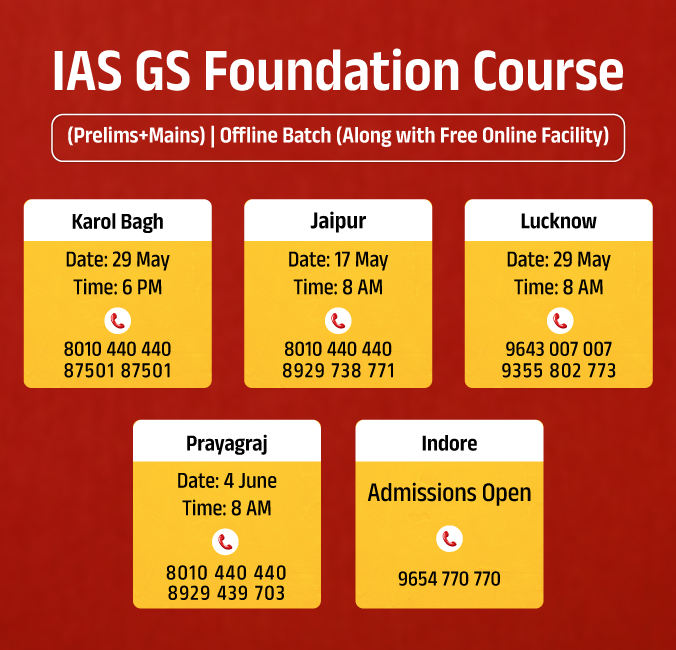
Indian Economy
Competition in Digital Markets
For Prelims: Competition Commission of India (CCI), digital platforms, competition law, online ads, targeted advertising, regulatory framework, Personal Data Protection Bill, 2023
For Mains: Key aspects of Digital markets, Challenges Associated with the Competition in Digital Markets
Why in News?
Recently, at the 15th annual day celebrations of the Competition Commission of India (CCI), the Chairperson stressed upon the tendencies of digital markets towards market concentration leading to monopolistic tendencies.
What were the Key Highlights of the Event?
- According to the CCI Chairperson,the control of digital platforms over large datasets can create barriers to entry for new players, compromise platform neutrality, and lead to algorithmic collusion.
- Attorney-General for India also highlighted that the monopoly of e-commerce platforms over user data “can be an area for scrutiny” and the need for new ideas to balance the free market and social benefit, requiring legal innovation.
- For the future, the digital economy offers immense opportunities for innovation, growth, and consumer benefit but has challenged traditional competition law frameworks worldwide.
- In the context of digital markets, the importance of tools like behavioural economics to understand human preferences was also highlighted.
What is a Digital Market?
- About:
- Digital markets, also called online markets, are essentially any commercial space where businesses and consumers connect through digital technologies.
- Examples:
- E-commerce Marketplaces: These are online platforms where businesses sell products directly to consumers (B2C), like Amazon and eBay.
- Digital Advertising: This involves online ads displayed on websites, social media platforms, or search engines. Companies like Google Ads and Facebook Ads operate in this space.
- Social Media Marketing: Businesses utilise social media platforms like Facebook, Instagram, or Twitter to connect with potential customers, build brand awareness, and promote products or services.
- Search Engine Optimization (SEO): This involves optimising a website's content and structure to rank higher in search engine results pages (SERPs), increasing organic traffic.
- Characteristics Leading to Monopolistic Tendencies:
- Many digital markets exhibit certain characteristics, such as low variable costs, high fixed costs and strong network effects, that result in high market shares for a small number of firms.
What are the Challenges Associated with the Competition in Digital Markets?
- Market Dominance and Anti-Competitive Practices:
- A few powerful players can control a large share of the market, stifle innovation, and limit consumer choice. This dominance can lead to anti-competitive practices like:
- Self-preferencing: A platform prioritises its own products or services over competitors in search results or promotions.
- Example: Google allegedly favouring its own shopping results over other platform.
- Tying and Bundling: Forcing users to purchase unwanted products or services alongside desired ones.
- Example: iPhones offer a smooth user experience when paired with other Apple products like iPods and Apple Music. This tight integration forces the users to stay within the Apple ecosystem, potentially limiting their options with other brands.
- Exclusive Deals: Locking suppliers or distributors into exclusive agreements, hindering competition.
- Example: A streaming platform like Hotstar, Jio Cinema etc securing exclusive rights to shows, limiting viewer options.
- Self-preferencing: A platform prioritises its own products or services over competitors in search results or promotions.
- A few powerful players can control a large share of the market, stifle innovation, and limit consumer choice. This dominance can lead to anti-competitive practices like:
- Network Effects and Winner-Take-All Dynamics:
- The value of a platform increases as more users join, creating a snowball effect that makes it difficult for new entrants to compete.
- For example: Social media platforms like WhatsApp, Instagram etc. become more valuable with more users. This can lead to:
- High Switching Costs: Users become addicted due to accumulated data, network connections, or sunk costs, making it hard to switch to a competing platform.
- Reduced Innovation: Dominant players may have less incentive to innovate as they hold a strong market position.
- Data Advantage and Privacy Concerns:
- Digital companies collect vast amounts of user data, giving them an advantage in personalisation, targeted advertising, and product development. This raises concerns about:
- Consumer Privacy: The method through which user data is collected, stored, and used can be opaque, leading to privacy violations.
- Unequal Playing Field: New entrants may struggle to compete with established players who have a rich data set to leverage.
- Digital companies collect vast amounts of user data, giving them an advantage in personalisation, targeted advertising, and product development. This raises concerns about:
- Regulatory Challenges:
- The fast-paced nature of digital markets can make existing regulations ineffective. Regulators struggle to define and address:
- Antitrust Issues: Defining and proving anti-competitive behaviour in complex digital ecosystems can be difficult.
- Determining a dominant firm is also a substantial challenge.
- The fast-paced nature of digital markets can make existing regulations ineffective. Regulators struggle to define and address:
What are Possible Solutions to Monitor the Digital Markets Competition?
- Proactive Measures:
- Designation of Systemically Important Digital Intermediaries (SIDIs): Identification of dominant players with significant market power (based on user base, and revenue) and subject them to stricter regulations.
- Prohibition of Anti-Competitive Practices: Explicitly banning practices like self-preferencing and exclusive dealing that stifle competition.
- Example: A platform can't prioritise its own products over competitors in search results.
- Data Sharing and Interoperability: Mandating data sharing or platform interoperability to some particular extent to allow users to move data or services between platforms more easily.
- Example: Allowing users to transfer their online shopping cart from one platform to another.
- Strengthening the Competition Commission of India (CCI):
- Enhanced Resources and Expertise: Providing the CCI with additional powers, resources and personnel to effectively monitor digital markets and investigate potential anti-competitive practices.
- Example: The 53rd Parliamentary Standing Committee Report recommended strengthening the CCI to address competition concerns in digital markets.
- Enhanced Resources and Expertise: Providing the CCI with additional powers, resources and personnel to effectively monitor digital markets and investigate potential anti-competitive practices.
- Promoting Innovation with Data Protection:
- Regulatory Sandbox: A regulatory framework for startups in digital markets should be established to test innovative products and services in a controlled environment with reduced regulatory burdens.
- Transparency and User Choice: Detailed regulations requiring platforms to be transparent about data collection practices and providing users with meaningful control over their data should be framed.
- Example: The Personal Data Protection Bill, 2023 aims to empower users with greater control over their personal data.
Conclusion
Digital markets offer a dynamic space for businesses and consumers to connect, but they also present unique challenges. The potential for monopolies, data privacy concerns, and a lack of innovation necessitate proactive solutions.with the increasing digitisation of the global world , it is imperative for India to take necessary steps to foster suitable conditions for startups.
|
Drishti Mains Question: Q. Discuss key features of Digital markets. What are the challenges and possible solutions associated with the competition in digital markets in India? |
UPSC Civil Services Examination, Previous Year Questions (PYQs)
Prelims:
Q1. ‘Right to Privacy’ is protected under which Article of the Constitution of India? (2021)
(a) Article 15
(b) Article 19
(c) Article 21
(d) Article 29
Ans: (c)
Q2. Right to Privacy is protected as an intrinsic part of Right to Life and Personal Liberty. Which of the following in the Constitution of India correctly and appropriately imply the above statement? (2018)
(a) Article 14 and the provisions under the 42nd Amendment to the Constitution.
(b) Article 17 and the Directive Principles of State Policy in Part IV.
(c) Article 21 and the freedoms guaranteed in Part III.
(d) Article 24 and the provisions under the 44th Amendment to the Constitution.
Ans: (c)
Mains:
Q. Examine the scope of Fundamental Rights in the light of the latest judgement of the Supreme Court on Right to Privacy. (2017)


Indian Economy
Reforming India's Informal Labour Market
For Prelims: Unorganized Sector vs Organised Sector, Labour Force Participation, Status of Informal Labour Market in India, Pradhan Mantri Jeevan Jyoti Bima Yojana , Pradhan Mantri Suraksha Bima Yojana, Ayushman Bharat- Pradhan Mantri Jan Arogya Yojana, eShram Portal,
For Mains: Unorganized Workers in India and Related Initiatives
Why in News?
India's labour market is characterised by a vast informal sector, with over 400 million workers operating outside the formal employment structure.
- The informal workforce contributes to over half of the country's GDP. However, the prevalence of lower-income and semi-skilled workers highlights the urgent necessity for a structural shift towards formalisation and equitable opportunities.
Note
- Labour Supply: It refers to the number of persons willing to work at different wage rates. It depends upon the existing wage rate and is measured in terms of man-days.
- Labour Force: It refers to the number of persons actually working or willing to work.
- It does not depend upon the wage rate and is measured in terms of number of days.
- Workforce: It refers to the number of persons actually working.
- This measure does not include those persons who are willing to work but are not getting work.
What is the Difference Between Formal and Informal Labour Market?
| Aspect | Formal Labour Market | Informal Labour Market |
| Definition | Organised sector with Legal Recognition and Regulation | Unorganised sector lacking Formal Recognition and Regulation with minimal adherence to Labour Laws |
| Employment Type | Fixed Working Hours, Permanent, Contractual Agreements, or Temporary jobs. (Also includes Part-time Work and Self- Employment) | Casual, Domestic Workers, Daily-wage, Part-time Workers or Self-employment. |
| Job Security | Generally higher job security due to labour laws. | Lower job security; vulnerable to layoffs. |
| Wages and Benefits | Fixed wages, benefits (e.g., provident fund, insurance) | Variable wages, limited benefits. |
| Social Security | Eligible for social security schemes (e.g., pensions) | Limited access to social security programs. |
| Work Conditions | Better working conditions (e.g., safety standards). | Often poor working conditions (e.g., lack of safety measures) |
| Trade Unions | Active trade unions and collective bargaining. | Limited unionisation and weaker bargaining power. |
| Sector Examples | Manufacturing, IT, finance, government jobs. | Street vendors, domestic workers, agriculture. |
What is the Current State of the Labour Market?
- Global State of Informal Economy:
- Over 60% of the global workforce and 80% of enterprises worldwide function in the informal economy.
- More than 2 billion workers earn their livelihoods through informal employment.
- Informal employment represents:
- 90% of total employment in low-income countries.
- 67% of total employment in middle-income countries.
- 18% of total employment in high-income countries.
- From 2010 to 2016, informal work contributed approximately 40% of GDP in Sub-Saharan Africa, Europe, Central Asia, Latin America and the Caribbean.
- In India:
- India's informal labour market accounts for almost 85% of the country's workforce.
- More than 90% of this informal workforce works as self-employed or casual labourers.
- The informal sector generates more than half of India's GDP.
- Over 94% of 27.69 crore informal sector workers registered on the e-Shram portal have a monthly income of Rs 10,000 or below and over 74% of the enrolled workforce belongs to Scheduled Castes (SC), Scheduled Tribes (ST) and Other Backward Classes (OBC).
- The proportion of the General Category workers is 25.56%.
- Around 94% of the registered informal workers have a monthly income of Rs 10,000 or below, while 4.36% have a monthly income between Rs 10,001 and Rs 15,000.
- India's informal labour market accounts for almost 85% of the country's workforce.
What are the Challenges Posed by the Informal Labour Market?
- Precarious Employment: Agricultural labourers and street vendors face seasonal unemployment and low wages due to a lack of regulation and bargaining power, leading to income inequality and increased poverty.
- Sustainable Livelihoods: Ensuring sustainable livelihoods and equitable opportunities for the informal workforce is challenging.
- Social Vulnerability: Large family sizes place a burden on agricultural labourers, while low incomes trap home-based workers and street vendors in cycles of low social status. This results in limited access to social security, healthcare, and other basic rights.
- Occupational Hazards: Waste pickers and recyclers face health risks due to poor working conditions and inadequate safety measures. Child labour is also prevalent in this sector.
- Institutional Challenges: Informal workers lack proper legal protection and are vulnerable to harassment by authorities.
What are the Government Schemes for Informal Labourers?
- Pradhan Mantri Jeevan Jyoti Bima Yojana (PMJJBY)
- Pradhan Mantri Shram Yogi Maan-dhan (PM-SYM)
- Atal Pension Yojana
- eShram Portal
- Additional Schemes for Unorganized Workers:
- The government is simplifying labour laws by consolidating them into 4 codes, which are not yet implemented.
Unorganised Workers’ Social Security Act, 2008
- Coverage: The Act defines and aims to support informal workers who lack regular employment and social security benefits.
- Benefits: The Act empowers central and state governments to design schemes offering various benefits like life insurance, disability coverage, healthcare, maternity support, and even assistance with education and housing.
- Governance: National and State Social Security Boards are established to advise and monitor the implementation of these schemes, ensuring proper execution.
- Registration: The Act mandates registration of informal workers by the district administration. This creates a record and facilitates delivering benefits.
- Accessibility: Worker facilitation centres are envisioned to provide information and help workers access the various schemes offered under the Act.
Way Forward
- Universal Coverage: Leverage the eShram portal and collaborate with industry associations to gradually enrol all informal workforce of over 400 million into social security schemes.
- Simplifying Registration Processes: Simplifying registration processes for informal businesses can help integrate them and their workers into the formal economy. Self-help groups (SHG) can play a key role in promoting self-reliance and improving working conditions for informal workers.
- Implementation of Labour Codes: Swiftly implement the four consolidated labour codes (Wages, Industrial Relations, Social Security, Occupational Safety) to address current challenges.
- Needs-Based Support:
- Tailored Schemes: Design social security programs specific to diverse worker groups like street vendors, agricultural labourers, and construction workers.
- Extending Maternity Benefits, Accident and Death Compensation, Education and Livelihood opportunities during lean period to informal workers also.
- Skill Development and Formalization:
- Skill Upgradation: Equip informal workers with relevant skills to enhance employability and potentially transition them into the formal sector.
- Formalization Incentives: Implement policy changes and attractive schemes to encourage formalisation of the labour market.
- Reduced GST for Employment Services: Consider employment services as "merit services" with a lower GST rate (e.g., 5% instead of 18%) to promote job creation.
- Skilling for Employability: Link skilling initiatives directly to employment opportunities.
- Grievance Redressal Mechanism: Grievances from informal workers should be heard and redressed periodically through an accessible and officially monitored mechanism.
|
Drishti Mains Question: Discuss the challenges faced by India's informal labour market and examine the importance of formalisation of the workforce in ensuring equitable opportunities and sustainable livelihoods. |
UPSC Civil Services Examination Previous Year Question (PYQ)
Prelims
Q. Pradhan Mantri MUDRA Yojana is aimed at (2016)
(a) bringing the small entrepreneurs into formal financial system
(b) providing loans to poor farmers for cultivating particular crops
(c) providing pensions to old and destitute persons
(d) funding the voluntary organizations involved in the promotion of skill development and employment generation
Ans: (a)
Q. Disguised unemployment generally means (2013)
(a) large number of people remain unemployed
(b) alternative employment is not available
(c) marginal productivity of labour is zero
(d) productivity of workers is low
Ans: (c)
Mains
Q. Most of the unemployment in India is structural in nature. Examine the methodology adopted to compute unemployment in the country and suggest improvements. (2023)

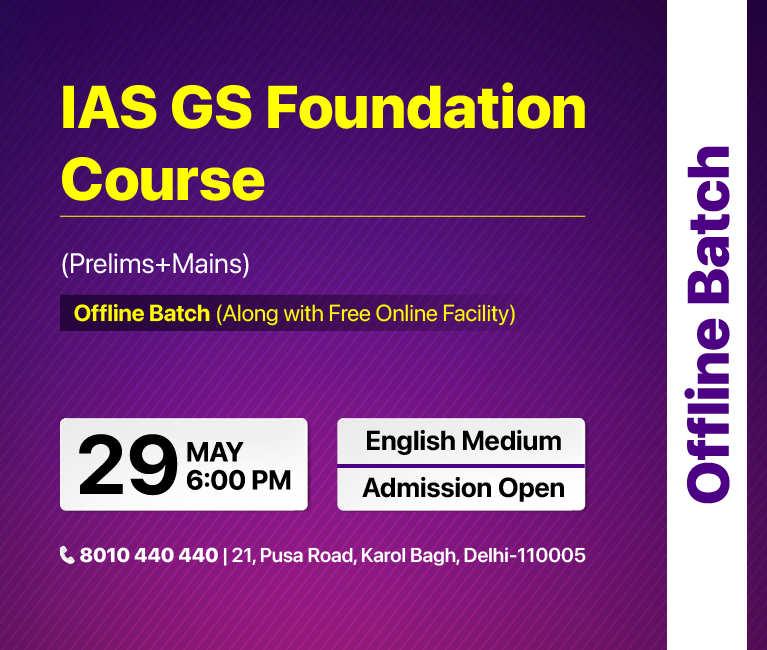
Indian Economy
India’s Service Sector
For Prelims: Services Sector, GDP, Flash Composite PMI, Manufacturing Sector, Economic Indicators
For Mains: Business Confidence, Economic Indicators, Challenges and Opportunities for Service Sector, Social Security Portability, and Best Practices
Why In News?
Business activity in India saw robust expansion in May 2024 driven by the dominant services sector, with the HSBC's flash India Composite purchasing managers'(PMI) Index compiled by S&P Global indicating record export growth and the highest job addition rate in nearly 18 years.
Purchasing Managers Index
- It is a survey-based measure that asks the respondents about changes in their perception of key business variables as compared with the previous month.
- The purpose of the PMI is to provide information about current and future business conditions to company decision-makers, analysts, and investors.
- It is calculated separately for the manufacturing and services sectors, and then a composite index is also constructed.
- The PMI ranges from 0 to 100, with scores above 50 indicating expansion, below 50 indicating contraction, and exactly 50 signifying no change.
- Released at the start of each month and considered a leading indicator of economic activity, the PMI, compiled by IHS Markit (part of S&P Global) for over 40 economies, reflects insights from a global leader in information and analytics.
- The PMI is a key economic indicator, with high readings signalling strong manufacturing and services sector performance and economic growth, while low readings suggest sector struggles and potential economic downturns.
- Flash Manufacturing PMI is an estimate of manufacturing for a country, based on about 85% to 90% of total Purchasing Managers' Index (PMI) survey responses each month.
What is the Service Sector?
- About:
- The service sector includes industries offering intangible services, such as finance, banking, insurance, real estate, telecommunications, healthcare, education, tourism, hospitality, IT, and BPO.
- Contribution of India’s Service Sector:
- The services sector contributes over 50% to India's GDP.
- India is the export hub for software services. The Indian IT outsourcing service market is expected to grow 6–8% between 2021 and 2024.
- In September 2023, India retained its 40th rank in the Global Innovation Index (GII), due to successful advancements in services that are technologically dynamic and can be traded internationally.
- The Indian services sector was the largest recipient of FDI inflows worth USD 108 billion between April 2000 and December 2023.
What are the Key Highlights of India's Flash Composite PMI?
- Composite PMI Increase: The Flash Composite Purchasing Managers' Index (PMI) for India rose to 61.7 in May 2024 from 61.5 in April 2024 indicating robust economic activity.
- Steep Job Expansion: May 2024 saw the sharpest expansion in private sector jobs since September 2006, driven by strong increases in new orders and capacity pressures.
- Export Orders: Both the manufacturing and services sectors saw a record rise in new export orders, achieving the fastest pace since the series started in September 2014.
- Input Costs and Prices: There was a faster increase in input costs, which pushed up the prices charged for Indian goods and services, leading to margin squeezes, particularly for service providers.
What Are the Challenges Related to India's Services Industry?
- Inadequate Physical Infrastructure: Inadequate transport networks lead to delays and higher expenses (logistics costs in India constituting 14% of GDP), double the average in developed nations.
- Digital Infrastructure: Limited high-speed internet access in rural areas and concerns about cybersecurity and data protection affecting customer trust and international compliance standards.
- For example, In 2019, a major data breach at the Indian Railways Catering and Tourism Corporation (IRCTC) exposed the personal information of millions of users.
- Skill Development: Educational curricula's misalignment with industry needs and insufficient vocational training exacerbate workforce shortages (as per World Bank, 22% of graduates are deemed unemployable due to skill mismatches).
- Employment Practices: Rigid labour laws hinder hiring and firing flexibility, while many service jobs offer low wages and lack job security, sometimes leading to mass layoffs.
- Taxation Issues: Multiple taxes and compliance requirements increase businesses' administrative burden, and although the Goods and Services Tax (GST) aimed to simplify the system, its implementation has been challenging for many service providers.
- Domestic Competition: Intense competition among numerous SMEs limits profitability, while the unorganised sector in the services industry results in inconsistent service quality and standards.
- Moreover, the Indian service sector devoid of clear upstream-downstream distinctions and indigenous origins, risks resembling foreign setups instead of embodying local cultural and economic characteristics.
- International Competition: The presence of established global companies in sectors such as IT and finance elevates competition for local firms, while protectionist measures abroad can restrict market access for Indian service exporters.
- For example, the US imposes H-1B visa quotas, making it difficult for Indian IT companies to send skilled workers to work on projects in the US.
- Access to Finance: Limited access to affordable finance constrains growth and expansion for service providers, hampering investment in research and development, and thus impacting innovation and competitiveness.
- It exacerbates disparity in competitiveness and market reach between traditional physical establishments and their digital counterparts.
What are the Potential Opportunities for India in the Service Sector?
- IT-BPO (Business Process Outsourcing)/ Fintech: This sector is a major employer and GDP contributor in India, with growth potential bolstered by a large pool of skilled IT professionals and government support for the fintech industry.
- Healthcare & Tourism: India's rapidly growing healthcare sector is fueled by an ageing population, rising disposable incomes, and a burgeoning medical tourism industry offering high-quality care at lower costs compared to developed countries.
- Logistics & Transportation: India's underdeveloped logistics sector has significant growth potential, bolstered by government infrastructure investments that will create opportunities for logistics and transportation companies.
- Education: India's large young population and growing demand for quality education are creating opportunities for companies offering online education and vocational training services.
- Professional Services: India's vast pool of skilled professionals in fields like accounting, law, and consulting is generating opportunities for companies offering professional services to businesses.
Way Forward
- Social Security Portability: Design a portable social security system that caters to the needs of gig workers and those transitioning between formal and informal sectors.
- Entrepreneurship and Innovation: Establish industry-specific startup incubators and accelerators, and promote the expansion of angel investor networks to provide early-stage funding for promising startups.
- Targeted Programs for Marginalised Groups: Implement targeted skill development programs for individuals from marginalised communities, similar to the SMILE initiative, to ensure inclusivity and empower active workforce participation.
- AI and Automation Reskilling: Equip the workforce for the rise of automation by offering training in AI, robotics, and data science, enabling workers to adapt to and thrive in the changing job market.
- Remote Work Opportunities: Promote the adoption of technology by companies to facilitate remote work, enhancing job accessibility for those residing outside urban centres and fostering improved work-life equilibrium.
- Best Practices: Implement strategies to encourage informal workers to shift to the formal sector, leveraging insights from Peru’s National Strategy, which utilises decentralised stakeholder involvement including the state, businesses, academia, workers, civil society, and Indigenous peoples.
|
Drishti Mains Question: Q. Discuss the various challenges faced by India's service sector and suggest measures to overcome these challenges. |
UPSC Civil Services Examination, Previous Year Question (PYQ)
Prelims
Q. What does S & P 500 relate to? (2008)
(a) Supercomputer
(b) A new technique in e-business
(c) A new technique in bridge building
(d) An index of stocks of large companies
Ans: (d)
Q. In the ‘Index of Eight Core Industries’, which one of the following is given the highest weight? (2015)
(a) Coal production
(b) Electricity generation
(c) Fertilizer production
(d) Steel production
Ans: (b)
Mains
Q1. Industrial growth rate has lagged behind in the overall growth of Gross-Domestic-Product(GDP) in the post-reform period” Give reasons. How far the recent changes is Industrial Policy are capable of increasing the industrial growth rate? (2017)
Q2. Normally countries shift from agriculture to industry and then later to services, but India shifted directly from agriculture to services. What are the reasons for the huge growth of services vis-a-vis the industry in the country? Can India become a developed country without a strong industrial base? (2014)


Important Facts For Prelims
Olive Ridley Turtle
Why in News?
Recently, the traditional Chinese sky lantern festival has sparked outrage among environmentalists and wildlife conservationists as it was scheduled near a nesting site of the endangered Olive Ridley turtles.
- As per environmentalists, the bamboo or metal wire frame of these lanterns takes months to decompose and acts as a trap for wildlife, fish, dolphins, birds, and turtles.
What are Olive Ridley Turtles?
- About:
- These turtles are carnivores and get their name from their olive-coloured carapace.
- They are best known for their unique mass nesting called Arribada, where thousands of females come together on the same beach to lay eggs.
- Habitat:
- They are found in warm waters of the Pacific, Atlantic, and Indian oceans.
- Odisha’s Gahirmatha Marine Sanctuary is known as the world’s largest rookery (a colony of breeding animals) of sea turtles.
- Protection Status:
- Wildlife Protection Act, 1972: Schedule 1
- IUCN Red List: Vulnerable
- CITES: Appendix I
- Initiatives to Protect Olive Ridley Turtles:
- Operation Olivia: Every year, the Indian Coast Guard’s “Operation Olivia”, initiated in the early 1980s, helps protect Olive Ridley turtles as they congregate along the Odisha coast for breeding and nesting from November to December.
- It also intercepts unlawful trawling activities.
- Mandatory use of Turtle Excluder Devices (TEDs):
- To reduce accidental killing in India, the Odisha government has made it mandatory for trawls to use Turtle Excluder Devices (TEDs), a net specially designed with an exit cover that allows the turtles to escape while retaining the catch.
- Tagging:
- The tagging of the Olive Ridley turtles using non-corrosive metal tags is done to enable scientists to chart their movements and know the areas they visit to protect the species and their habitats.
- Operation Olivia: Every year, the Indian Coast Guard’s “Operation Olivia”, initiated in the early 1980s, helps protect Olive Ridley turtles as they congregate along the Odisha coast for breeding and nesting from November to December.
Sky Lantern Festival Glowfest:
- This sky-lantern festival is celebrated in China and other Asian countries that honours deceased ancestors on the 15th day of the first month of the lunar calendar.
- This festival aims to promote reconciliation, peace, and forgiveness.
- It is celebrated by releasing candle-lit paper lanterns into the sky.
What are the Threats Faced by Olive Ridley Turtles?
- Coastal development projects, such as the construction of seawalls, resorts, and ports, destroy nesting beaches and reduce foraging grounds for olive ridley turtles.
- They are accidentally caught in fishing gear, such as gillnets, trawls, and longlines. This can injure or kill the turtles.
- Raccoons, crabs, birds, and foxes can raid olive ridley turtle nests and predate on the eggs affecting their population growth.
- Warmer ocean temperatures can also disrupt the sex ratios of hatchlings, producing more females.
- They can often consume plastic bags in search of foods like for jellyfish, and ingest them, leading to blockages and starvation.
- Artificial lights from nearby towns and industries can disorient hatchlings, causing them to move away from the sea and towards nearby villages.
UPSC Civil Services Examination, Previous Year Questions (PYQs)
Prelims
Q. Which one of the following is the national aquatic animal of India? (2015)
(a) Saltwater crocodile
(b) Olive ridley turtle
(c) Gangetic dolphin
(d) Gharial
Ans: C
Q. Consider the following statements: (2019)
- Some species of turtles are herbivores.
- Some species of fish are herbivores.
- Some species of marine mammals are herbivores.
- Some species of snakes are viviparous.
Which of the statements given above are correct?
(a) 1 and 3 only
(b) 2, 3 and 4 only
(c) 2 and 4 only
(d) 1, 2, 3 and 4
Ans: (d)


Important Facts For Prelims
Flamingos, Himalayan Ibex and Blue Sheep
Why in News?
Recently, around 39 Flamingos were killed in a collision event with an aircraft landing at the Mumbai airport.
- Since flamingos are a protected species under the Wildlife Protection Act (1972), the rescuers handed over the carcasses of the flamingos to the forest department conducting the necropsy.
What are the Key Facts About the Flamingos?
- There are 6 flamingo species found around the world namely American Flamingo, Andean Flamingo, Chilean Flamingo, Greater Flamingo, James's Flamingo , and Lesser Flamingo.
- Greater Flamingo:
- About:
- It is the largest and most widespread flamingo species.
- These are the state bird of Gujarat.
- They are categorised as "least concern (LC)" in the IUCN Red List of Threatened Species.
- These are found in various regions of Africa, the southeastern parts of Asia as well as southern Europe.
- In Asia, their distribution range includes the coastal areas of India and Pakistan.
- Northern populations of these birds often migrate to warm regions during winter due to various reasons like scarcity of food, water-level changes, and competition within a single colony.
- Characteristics:
- These species form monogamous pairs which means each pair remains together for their entire lives.
- They get their characteristic pink colour from their diet of brine shrimps and algae available in the coastal wetlands. The flamingoes are the indicators of a healthy coastal environment.
- These omnivorous species feed on molluscs, crustaceans, insects, crabs, worms and small fishes. Their diet also consists of various plant materials such as algae, grass, decaying leaves, and shoots.
- These birds prefer saltwater lagoons in coastal areas. They also inhabit large alkaline and saline lakes.
- About:
- Migration Pattern of Flamingo in India:
- Experts note that nearly 100,000 to 150,000 flamingos migrate from Gujarat (including Kutch and Bhavnagar) and other scattered locations to Mumbai each November in search of food.
- Upon arrival, they establish themselves in the Thane Creek area (breeding grounds for Flamingos).
Survey of Himalayan Ibex and Blue Sheep
- Wildlife authorities in Himachal Pradesh’s Lahaul & Spiti district are conducting surveys to estimate the population of blue sheep and Himalayan ibex, the main prey of snow leopards.
- Snow leopards, classified as ‘vulnerable’ under the IUCN Red List have been increasingly sighted due to the growing population of blue sheep and Himalayan ibex.
| Features |
Himalayan Ibex |
Blue Sheep (Bharal) |
| Charecterstics |
|
|
| Distribution |
|
|
| Conservation Status |
|
|
UPSC Civil Services Examination, Previous Year Questions (PYQs)
Prelims
Q. Consider the following fauna: (2023)
- Lion-tailed Macaque
- Malabar Civet
- Sambar Deer
How many of the above are generally nocturnal or most active after sunset?
(a) Only one
(b) Only two
(c) All three
(d) None
Ans: (a)


Rapid Fire
Electroreception in Caterpillars
Recent research revealed that caterpillars can detect electric fields through setae on their bodies, an adaptation known as electroreception.
- This sensory ability is predominantly found in aquatic and amphibious species but has now been observed in these terrestrial insects.
- Electroreception enables caterpillars to sense approaching predators by detecting oscillating electric fields generated by the flapping wings of insects like wasps.
- This sensory ability may have evolved as an evolutionary response to intense predation, complementing other sensory defences caterpillars employ.
- Potential interference from "sensory pollution," such as electromagnetic frequencies from power cables, could disrupt this delicate sensing mechanism, posing a new challenge to their survival.
Read more: The Secret Lives of Insects


Rapid Fire
Spherical Shape of Planets
The spherical shape of planets is largely attributed to the interplay of gravity and geometry.
- Gravity is the primary force shaping planets, compelling them into a spherical form due to their massive size.
- A sphere offers the most compact three-dimensional shape, minimising surface area for a given volume.
- While commonly referred to as spherical, planets and stars are actually oblate spheroids, slightly flattened at the poles due to centrifugal force from rotation.
- Rotation creates a centrifugal force, resulting in a slight bulge at the equator, making gravity weaker in this region compared to the poles.
- Gravity tends to shape celestial bodies into spheres, while smaller bodies such as comets and asteroids maintain irregular shapes due to stronger electromagnetic forces.
Read more: Comet C/2020 F3 Neowise


Rapid Fire
Microcephaly
Microcephaly, a neurological condition characterised by an abnormally small head and impaired brain development, has been the focus of extensive research, with the SASS6 gene emerging as a key player in this complex genetic disorder.
- Children with microcephaly often have a small brain, poor motor function, speech impairment, abnormal facial features, and intellectual disability.
- The roots of microcephaly lie in the peak phase of brain development in the embryo when the cells destined to become neurons fail to divide normally.
- Since 2014, a gene called SASS6 and its variants have been implicated in this developmental process.
- Researchers have observed that mutations in the SASS6 gene can lead to abnormal centriole formation, crucial for cell division and neural development.
- The Ile62Thr Mutation in the SASS6 gene has been linked to microcephaly, with the protein made using the mutated gene still being functional enough to allow survival, but causing brain and head deficits.
- According to researchers, consanguineous marriages (cousin marriage) increase the risk of inheriting a mutated copy of a gene, including the SASS6 gene, leading to a higher incidence of microcephaly.
Read more: NBRC Researchers Decipher the Cause of Microcephaly


Rapid Fire
PRAGATI-2024
The Central Council for Research in Ayurvedic Sciences (CCRAS) has launched a groundbreaking initiative called "PRAGATI-2024" (Pharma Research in AyurGyan And Techno Innovation) to foster collaborative research and innovation in the field of Ayurveda.
- PRAGATI-2024 aims to explore research opportunities and foster collaboration between CCRAS and the Ayurveda drug industry.
- The CCRAS is an autonomous body of the Ministry of AYUSH (Ayurveda, Yoga & Naturopathy, Unani, Siddha and Homeopathy.
- It is an apex body in India for the formulation, coordination, development and promotion of research on scientific lines in the Ayurveda and Sowa-Rigpa systems of medicine.
Read more: SMART Program for Ayurveda



